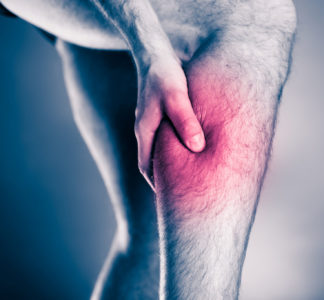 Staying active as you age is important for your health, although it can leave you more susceptible to activity-related injuries. One such injury is the calf muscle tear, which is most common in middle-aged recreational athletes. These injuries can be painful, but they can heal pretty easily with the right treatment options. Today, we take a closer look at the causes, symptoms and treatment options for calf muscle tears.
Staying active as you age is important for your health, although it can leave you more susceptible to activity-related injuries. One such injury is the calf muscle tear, which is most common in middle-aged recreational athletes. These injuries can be painful, but they can heal pretty easily with the right treatment options. Today, we take a closer look at the causes, symptoms and treatment options for calf muscle tears.
Causes and Symptoms of Calf Muscle Tears
Calf muscle tears, also known as a gastrocnemius tear, often occur during forceful and repetitive contractions of the calf muscle. Typically this happens during recreational sporting activities like running, tennis or basketball, but it can occur without athletic activity as well. Calf muscle tears have similar symptoms and occur by a similar mechanism as an Achilles tendon tear, the only difference being the location of the injury. The Achilles is located on the back of the heel, while calf muscle tears tend to occur higher up near where the muscle belly attaches to the fascia.
Symptoms of calf muscle tears include:
- Sharp pain in the calf
- Calf swelling
- Bruising
- Unable to walk or run/Walking with a limp
In minor tears, patients may only experience mild pain, and they may try to push through the pain to keeping playing or exercising. Doing so increases your risk of the more severe tear, so take some time off to let the minor injury heal so it doesn’t snowball out of control.
Diagnosis and Treatment of Calf Muscle Tears
Because calf tears and Achilles tendon tears are very similar in nature, most doctors will rule out an Achilles tear before making a clear diagnosis. The surgeon will conduct a physical assessment of your injuries and may ask you to perform some manipulation exercises. If they can safely rule out an Achilles injury, no imaging tests may be needed, otherwise an MRI can look for tendon tearing.
Clinically diagnosed calf tears can be treated with conservative care methods. The most common treatments in the immediate aftermath are rest and activity modification to limit muscle loading. As healing progresses, you’ll likely begin to partake in some physical therapy and range of motion exercises. Odds are you’ll experience some significant healing in the first two weeks, but healing can get a little slower after that as the body progresses towards full recovery. Most calf injuries heal within 6-8 weeks, although it may take longer to restrengthen the muscle as it will likely have atrophied slightly due to lack of use.
Surgery is rarely needed for calf muscle tears unless there is an issue with the underlying bone, or it ruptured in conjunction with the Achilles tendon. Most people can make a full recovery with non-surgical treatments, but that doesn’t mean you don’t need a doctor’s visit. An orthopedic surgeon can rule out any additional problems and set you up with a care plan tailored to your specific situation.